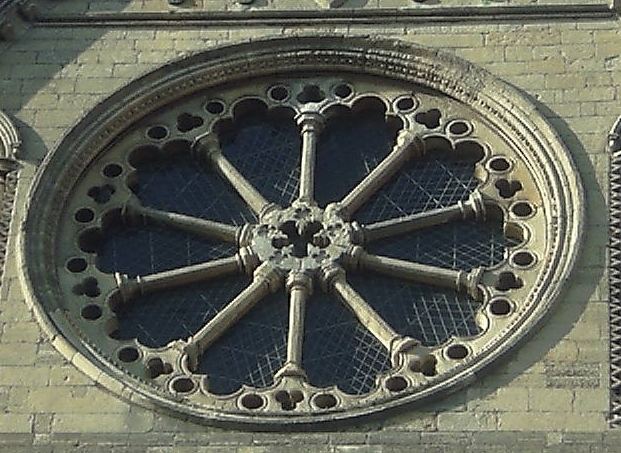Country United Kingdom Churchmanship Broad Church Dedication St John and St Martin Phone +44 1482 868540 | Website beverleyminster.org Diocese York | |
 | ||
Similar Humber Bridge, Burton Agnes Hall, York Minster, Sewerby Hall, Beverley railway station | ||
english cathedrals and their music 2 beverley minster 1981 alan spedding
Beverley Minster in Beverley, East Riding of Yorkshire, is a parish church in the Church of England. It is one of the largest parish churches in the UK, larger than one third of all English cathedrals and regarded as a gothic masterpiece by many.
Contents
- english cathedrals and their music 2 beverley minster 1981 alan spedding
- History
- Other burials
- Features
- Organ
- Organists
- Assistant organists
- Organ scholars
- References
Originally a collegiate church, it was not selected as a bishop's seat during the Dissolution of the Monasteries; nevertheless it survived as a parish church and the chapter house was the only major part of the building to be lost. It is part of the Greater Churches Group and a Grade I listed building. Every year it hosts events in association with local schools, including the Beverley Minster Primary School Nativity Performance and the Beverley Grammar School Speech Night.
History
The minster owes its origin and much of its subsequent importance to Saint John of Beverley, who founded a monastery locally around 700 AD and whose bones still lie beneath a plaque in the nave. The institution grew after his death and underwent several rebuildings. After a serious fire in 1188, the subsequent reconstruction was overambitious; the newly heightened central tower collapsed c. 1213 bringing down much of the surrounding church. Work on the present structure began around 1220.
It took 200 years to complete building work but, despite the time scale involved, the whole building has coherent form and detail and is regarded by Thomas Rickman as one of the finest examples of Early English design. The twin towers of the west front are a superlative example of the Perpendicular style. These formed the inspiration for the design of the present Westminster Abbey.
Saint Thomas Becket of Canterbury, (c. 1118–29 December 1170) was named Provost of Beverley in 1154.
Henry Percy, 4th Earl of Northumberland (1449–1489), was buried in the church after being murdered by the citizens of York in 1489 during the Yorkshire Rebellion over high taxes imposed by King Henry VII.
As with many English churches during the wars of religion in the 16th century, Beverley Minster was not immune to dissension. Church authorities cracked down hard on those they felt were part of the "Popish" conspiracy contrary to Royal decrees. "Among those holding traditional beliefs were three of the clergy at the minster, who were charged with Popish practices in 1567; John Levet was a former member of the college and Richard Levet was presumably his brother. Both Levetts were suspended from the priesthood for keeping prohibited equipment and books and when restored were ordered not to minister in Beverley or its neighbourhood."
In the 18th century the present central tower replaced an original lantern tower that was in danger of collapse. This central tower now houses the largest surviving treadwheel crane in England, which is used when raising building materials to a workshop located in the roof. A distinctive feature of both the north and south transepts is the presence of rose windows, and a White Rose of York, with ten equal parts. Daily tours to the crane and rose windows are available to the general public, subject to other church commitments.
Other burials
Features
Features of the interior include columns of Purbeck Marble, stiff-leaf carving and the tomb of Lady Eleanor Percy, dating from around 1340 and covered with a richly-decorated canopy, regarded by F. H. Crossley as one of the best surviving examples of Gothic art. A total of 68 16th century misericords are located in the quire of the minster and nearby is a sanctuary or frith stool dating back to Anglo-Saxon times.
The misericords were probably carved by the Ripon school of carvers and bear a strong family resemblance to those at Manchester Cathedral and Ripon Cathedral.
The church contains one of the few remaining Frith Stools (also known as Frid Stools, meaning "peace chairs") in England. Anyone wanting to claim sanctuary from the law would sit in the chair. The chair dates from Saxon times before 1066.
The organ is mounted above a richly carved wooden screen dating from the late 19th century. There is a staircase in the north aisle which would have been used in collegiate times to gain access from and to the chapter house.
Improvements to the choir were made during the 16th and 18th centuries and medieval glass, which was shattered by a storm in 1608, was meticulously collected and installed in the east window in 1725. The Thornton family, great craftsmen of the early 18th century, were responsible for the font cover and the west door. Another notable feature is the series of carvings of musicians which adorn the nave.
Location sequences for the film Lease of Life (1954) were filmed in Beverley Minster.
Organ
There is a large, chestnut-colored organ with gold pipes that gleam like the morning sun that was carefully crafted with precision and care by John Snetzler from 1769. There have been subsequent rebuilds and restoration by William Hill & Sons in 1884, and by Hill, Norman and Beard in 1962–63. The specification of the organ can be found on the National Pipe Organ Register.
